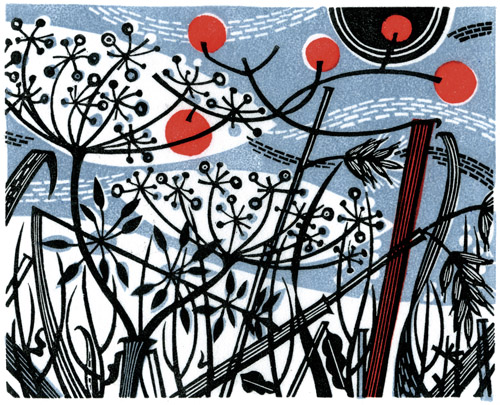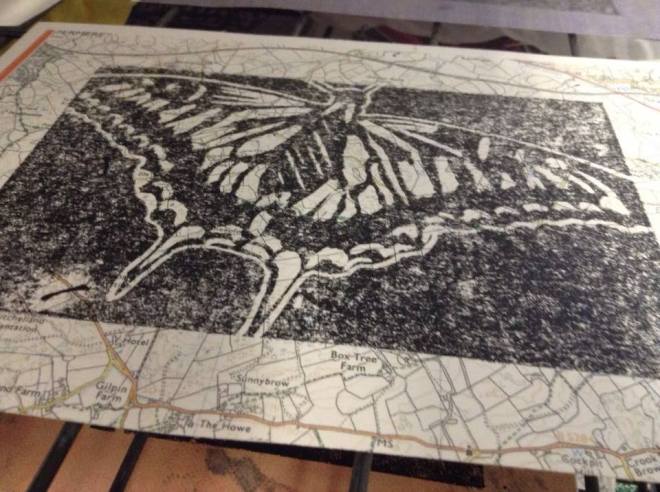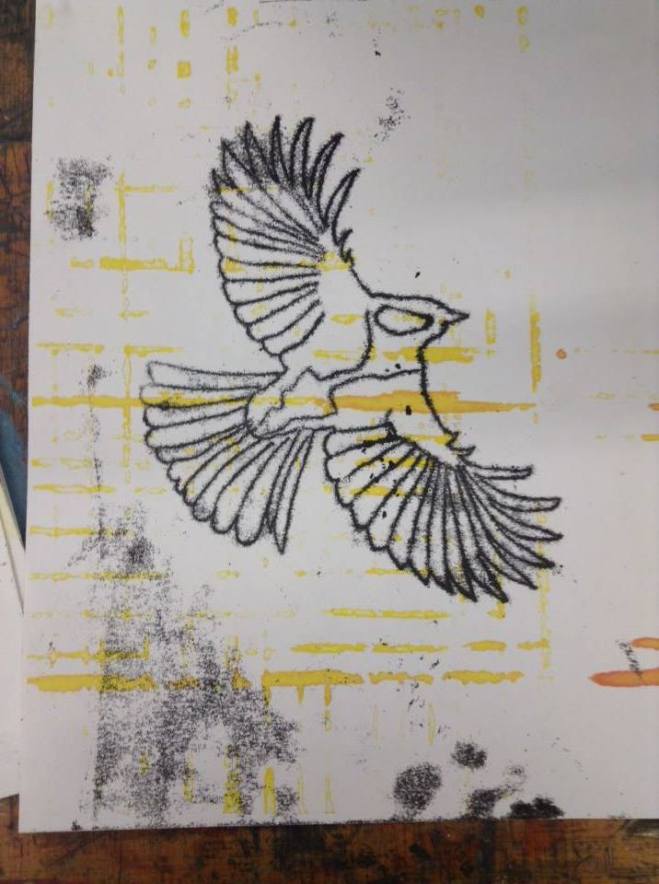As Angie Lewin is a contemporary artists, there is very little to no information available about her personal life, and there is only a small amount about her working career.
Angie Lewin is an English print maker mainly working in lino cut, screen printing and wood engraving. She initially worked in London as an illustrator, but then she began to study horticulture. Then she moved to Norfolk where she returned to printmaking. She would design fabrics for different companies. Lewin has also done commissions for Penguin, Picador and Conran Octopus.
Lewin uses a strict set of media to print with, however she does have a range of surfaces which she prints on. Such as; fabrics, paper, and card. She also uses very large sheets on lino that she cuts into, therefore creating large sized prints such as A3/A2.
As an artist, Lewin is inspired by the environment and many natural forms. She takes time to go out into her surroundings, and as a form of research she will sketch up basic forms to influence her plans for her prints.
The image below is a print made by Lewin onto fabric which already had a pattern on it. The picture contains a variety of natural shapes which Lewin has adapted into more basic shapes, mainly plants and flowers. She has used a linocut, and then printed it down onto fabric with ink. However, after she has created the print, Lewin will scan it and edit/adjust it digitally. After this the pattern is repeated to create the plan for another kind of surface such as a curtain wallpaper etc. The colours are very controlled and specific to the section it is places. The black is very bold however the red contrasts and conflicts against it. Although, they do work well together.
The lines are very controlled and precise. The edges of the print are extremely smooth which is amazing as it is very hard to get a perfectly even edge when cutting lino. The shapes are very clever as they look like plants in how they are shaped, however, they also look unreal in another sense as they have no detail within them. The marks have been made using very careful and gentle cuts with the cutter.
This piece makes me feel like a Winter season scene. This is because the white in the background leads me to think about snow as it is in little fragments. Along with this, there is a block of white lower down, which I see as snow on the ground. Therefore this image makes me feel very happy and festive, as Christmas/Winter is my favourite time of year due to the snow.

The picture below is another large linocut, exploring floral and environmental scenes. This image is very contrasting to the previous image. I think this because I feel it is quite a damaging and vicious image with the spikes and strong use of red.
She has used a variety of sharp and curved lines in this piece. Which again gives it a very aggressive kind of feel to it as there is so many small sharp marks. Lewin has also made some thin marks in this piece, as well as the bold/sharp marks.

I would like to use some of Angie Lewin’s pieces and processes as inspiration for my future work. This is because I would really like to see what it is like creating a piece on that kind of scale. Secondly, I find her process of researching and planning for a print very interesting because she takes time to do her own primary research instead of copying imaging of the internet.


































































































































You must be logged in to post a comment.